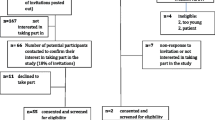Abstract
Objective
To estimate the prevalence of overmedication with levothyroxine in ambulatory elderly patients and to determine if this older patient population is inherently more likely to have suppressed serum TSH concentration.
Research design and methods
The medical records of 180 elderly men above the age of 60 years who were on levothyroxine therapy were reviewed. The prevalence of suppressed TSH as measured by a supersensitive assay in 935 ambulatory patients in a Department of Veterans Affairs Medical Center and 214 unselected elderly subjects presenting to a health fair was also evaluated. Concomitant free T4 measurements done with a competitive binding assay kit were available in 381 patients.
Results
The overall prevalence of low serum TSH levels among patients on levothyroxine therapy followed up in an academic center is 13,3%. Patients seen in general medicine (8.7%) and geriatric clinic (7.7%) had the lowest rates of overreplacement with thyroid hormone compared to other medical subspecialty clinics (16.7%). There was a significant correlation between levothyroxine dose used and serum free T4, TSH or log TSH values. The prevalence of low TSH in elderly subjects without known history of thyroid disease was 1.7% in the community and 3.1% in patients seen in clinics. The sensitivity of the pituitary thyrotrophs to thyroid hormone was not increased in elderly patients.
Conclusions
The prevalence of overmedication with levothyroxine in elderly patients is high, especially in those seen in community clinics. The suppressed serum TSH levels in elderly patients on levothyroxine is the result of overdosage rather than secondary to increased pituitary gland sensitivity to thyroid hormone.
Similar content being viewed by others
References
Ross, D.S., Daniels, G.H., and Gouveia, D.: The use and limitations of a chemiluminescent thyrotropin assay as a single thyroid function test in an outpatient endocrine clinic. J. Clin. Endocrinol. Metab., 71: 764–769, 1990.
Nicoloff, J.T., and Spencer, C.A.: Clinical Review 12. The use and misuse of the sensitive thyrotropin assays. J. Clin. Endocrinol. Metab., 71: 553–558, 1990.
Surks, M.I., Chopra, I.J., Mariash, C.N., Nicoloff, J.T., and Solomon, D.H.: American Thyroid Association guidelines for use of laboratory tests in thyroid disorders. JAMA, 263: 1529–1532, 1990.
Snyder, P.J., and Utiger, R.D.: Response to thyrotropin releasing hormone (TRH) in normal man. J. Clin. Endocrinol. Metab., 34: 380–385, 1972.
Snyder, P.J., and Utiger, R.D.: Thyrotropin response to thyrotropin releasing hormone in normal females over forty. J. Clin. Endocrinol. Metab., 34: 1096–1098, 1972.
Erfurth, E.V., Norden, N.E., Hedner, P., Nilsson, A., and Ek, L.: Normal reference interval for thyrotropin response to thyroliberin: Dependence on age, sex, free thyroxine index, and basal concentrations of thyrotropin. Clin. Chem., 30: 196–199, 1984.
Robuschi, G., Safran, M., Braverman, L.E., Gnudi, A., and Roti, E.: Hypothyroidism in the elderly. Endocrine Rev., 8: 142–153, 1987.
Donda, A., and Lemarchand-Beraud, T.: Aging alters the activity of 5′-deiodinase in the adenohypophysis, thyroid gland, and liver of the male rat. Endocrinology, 124: 1305–1309, 1989.
Sawin, C., Geller, A., Kaplan, M.M., Bacharach, P., Wilson, P.W.F., and Hershman, J.M.: Low serum thyrotropin (thyroid-stimulating hormone) in older persons without hyperthyroidism. Arch. Intern. Med., 151: 165–168, 1991.
Ehrmann, D.A., Weinberg, M., and Sarne, D.H.: Limitations to the use of a sensitive assay for serum thryotropin in the assessment of thyroid status. Arch. Intern. Med., 149: 369–372, 1989.
Ordene, K.W., Pan, C., Barzel, U.S., and Surks, M.I.: Variable thyrotropin response to thyrotropin-releasing hormone after small decreases in plasma thyroid hormone concentrations in patients of advanced age. Metabolism, 32: 881–888, 1983.
Author information
Authors and Affiliations
About this article
Cite this article
Friedman, D., Reed, R.L. & Mooradian, A.D. The prevalence of overmedication with levothyroxine in ambulatory elderly patients. AGE 15, 9–13 (1992). https://doi.org/10.1007/BF02434907
Issue Date:
DOI: https://doi.org/10.1007/BF02434907




